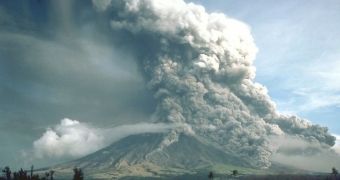A new study by experts at IFM-GEOMAR, in Kiel, Germany, indicates that massive volcanic eruptions, such as several that occurred in Nicaragua in the recent geological past, have the ability to significantly thin Earth's protective ozone layer.
Without O3 in the atmosphere, dangerous amounts of ultraviolet radiations from sunlight would make their way onto the surface of the planet. Humans are very prone to developing skin cancers after being exposed to excessive amounts of UV light, and other creatures can be similarly affected as well.
Life on Earth evolved protected from light at these wavelengths, and would therefore have a very difficult time handling its biological effects. In recent times, the ozone layer has been threatened by man-made chemicals such as chlorofluorocarbons (CFC), which are now banned.
But naturally occurring chemicals also have the ability to destroy the planet's ozone layer. According to geological data, Nicaraguan volcanoes that erupted over the past 70,000 years released sufficiently high amounts of halogen gases into the air to cause a dangerous decrease in available O3 amounts.
If similarly explosive eruptions were to occur today, the effects would be equally devastating, experts say. The consequences may actually turn out to be more severe, considering that CFC pollution has already punched a large hole in the ozone layer above Antarctica.
Despite the fact that legislation prohibiting the use of CFC worldwide has been in effect for more than 20 years, the massive hole has yet to recover. Releasing massive amounts of halogen compounds into the atmosphere would rapidly degrade whatever recovery has been recorded thus far.
“If [chemicals such as bromine and chlorine] reach the upper levels of the atmosphere, they have a high potential of depleting the ozone layer,” GEOMAR meteorologist Kristin Kruger reports. These substances “love to react – especially with ozone,” she goes on to say.
A study she and her team conducted via proxies, on the old Nicaraguan eruptions, found that they were explosive enough to throw material and chemicals all the way to the stratosphere.
Investigators now plan to focus their efforts on figuring out the full extent of the damage to the ozone layer brought on by old eruptions. This will help scientists figure out how future eruptions of today's most active volcanoes could affect Earth's ozone layer.
Knowing this in advance will allow us to be more prepared for whatever happens, they conclude, quoted by Science Blog.

 14 DAY TRIAL //
14 DAY TRIAL //